The Imperial Cities and The South of Morocco
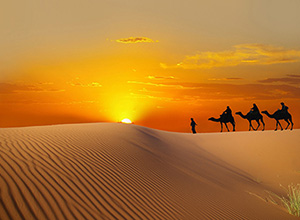
Duration: 16 days
Area: Casablanca, Fes, Rabat, Sahara Desert, Marrakech, Essaouira
Style: cultural tour
Comfort Level:![]()
![]()
![]()
![]()
![]()
Highlights:
- Casablanca
- Rabat
- Fes
- Erfoud
- Sahara Desert
- The high Atlas
- Marrakech
- Essaouira
Morocco is a huge country with large distances between the cities. We have created this full country sightseeing itinerary so you are able to see all there is on offer in Morocco. We can trim down the time frame to suit everyone’s different interests and holiday time. There are different modules we can add and drop, it can be pretty flexible.
Traveling overland by vehicle is the best way to visit Morocco. Domestic flights are not available in the south of Morocco. There is a flight now from Marrakesh to Fez a few times a week which is new.
Overland touring in Morocco allows you to visit many part of the country and experience the extreme diversity. Offering excellent vehicles with very professional drivers, water and WIFI offer a very private service.
The itinerary includes full or half day hikes, the mountain guides discuss with guests the level of hikes wanted based on your ability; moderate or more difficult.
Weather:
Morocco is a country of 4 seasons in one day! However, and in general, the best time to visit Morocco is March until mid-June, September, October and November.
End of June, July and August the weather is hot, in this time we suggest to visit one imperial city plus the coast or the Mountains.
December, January and February are winter months but most of the time days are sunny, it gets cold at night.
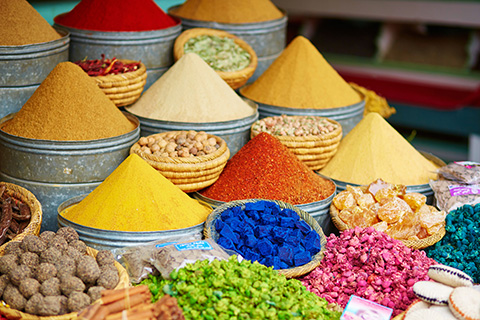
| Day 1 | Welcome arrival - Casablanca - Rabat |
| Day 2 | Rabat |
| Day 3 | Rabat – Meknes / Volubilis - Fes |
| Day 4 | Fes |
| Day 5 | Fes – Erfoud |
| Day 6 | Erfoud - Merzouga |
| Day 7 | Merzouga – Tinghir – Skoura |
| Day 8 | Ouarzazate – Marrakech – The high Atlas |
| Day 9 | Imlil |
| Day 10 | Asni – Marrakech |
| Day 11 - 12 | Marrakech |
| Day 13 | Marrakech - Essauoira |
| Day 14 | Essaouira |
| Day 15 | Essaouira – Safi – Oualidia - El Jadida - Casablanca |
| Day 16 | Casablanca |
Detailed Itinerary
Day 1: Welcome arrival - Casablanca - Rabat
Approximately 1 hour drive
Arrival into Casablanca airport, you will be welcomed by your English speaking guide and be transferred by car to your hotel in Rabat.
En route short visit of Casablanca and visit the remarkable Mosque Hassan II, one of only two mosques in Morocco open to non Islamic believers. Built by the late King Hassan II at the end of his 40-year reign, this astounding edifice is larger than Saint Peter’s in Rome and capable of holding 80,000 worshippers, ( the inside visit ends at 14h00pm).
Check in and accommodation at your hotel in Rabat.
Day 2: Rabat
At 9h30 am, your guide will meet you at the lobby of your hotel for half day tour of Rabat:
Continue to Rabat. recently granted UNESCO Heritage Site status, Rabat, the administrative capital of Morocco, was founded in 1146 by the Almohads, as a fortress (the name Rabat comes from the Arabic ribaat, meaning ‘fortified place’) from where to launch attacks on Spain A few years after the capital of the Empire was moved there by Yaqub al Mansour, under whose reign the Koutoubia in Marrakech had been built. He started to build in Rabat what would be the world’s largest mosque at the time, but works stopped when he died; the unfinished minaret known as Hassan Tower – less than half its intended height – bear witness of this attempt. Yaqub al Mansour also erected the city walls and expanded and restored the Kasbah of the Udayas, former stronghold of the Almoravids in the area. He also turned the ruins of the Roman city Sala Colonia, the Chellah, into a royal necropolis, which was further enriched by the Merenids in the 14th Century with the addition of monuments and buildings, and the magnificent main gate, dated 1339. Nowadays the Chellah is home to the best Archaeology Museum in Morocco.
After the death of Yaqub al Mansour the city fell into a period of decline. However, the arrival of Moriscos and Jews expelled from Spain in the early 17th Century revitalised it. Together with the neighbouring Sale, Rabat formed the independent Republic of Bou Regreg in 1627 – a corsair republic which was to cause much trouble both to European and Muslim ships until its collapse in 1818.
In Rabat is located also the Mausoleum of Mohamed V, grandfather of the current King of Morocco. A masterpiece of modern Moroccan architecture, it can be visited by non-believers.
The remainder of the day is at your leisure.
Day 3: Rabat – Meknes / Volubilis - Fes
Approximately 3 hours and half drive
Morning transfer to Fes. En route visit of the ancient Roman ruins of Volubilis sprawled over a wildflowerdotted hillside. Excavated by the French in 1915, these Roman ruins date back to the 3rd century AD and should not to be missed.
Continue to the Imperial city of Meknes known as the “Moroccan Versailles” and founded in the 17th century by King Moulay Ismail. Meknes is famous for its 25-milelong walls. There are numerous historic sites to see and here we name but a few; The massive gate of Bab Mansour, The Bassin de L’Agdal a massive 400m x 100m pool dating back some 300 years. The Mausoleum of Moulay Ismail is one of only three Moroccan shrines that non-Muslims can visit.
The Bou Inania Medersa, an Islamic educational institution, was built by Merenid Sultan Abu el Hassan and finished by his successor Sultant Abou Inan around 1340 – 1350. This is the Meknes version of the educational institution by the same name in Fez, more beautiful and better preserved than its more famous twin.
Time for lunch (on own ) and continue to Fes.
Check in and accommodation at your hotel in Fes.
Day 4: Fes
At 9h00 am, your guide will meet you at the lobby of your hotel for full day tour of Fes:
Fes el Bali is a UNESCO World Heritage Site was founded in the 9th century and home to the oldest university in the world, Fez reached its height in the 13th–14th centuries under the Merinids, when it replaced Marrakech as the capital of the kingdom. The urban fabric and the principal monuments in the medina – madrasas, fondouks, palaces, residences, mosques and fountains - date from this period. Although the political capital of Morocco was transferred to Rabat in 1912, Fez has retained its status as the country's cultural and spiritual centre.
Artisan workshops in the medina are as active today as 100 years ago, and strongly contribute to the city’s industrial economy. Trades such as metal and leather working, ceramics, silk, tapestries, and sculpting are still practiced in these workshops. Original ramparts still protect the ancient city and its’ 9000 passageways and narrow streets.
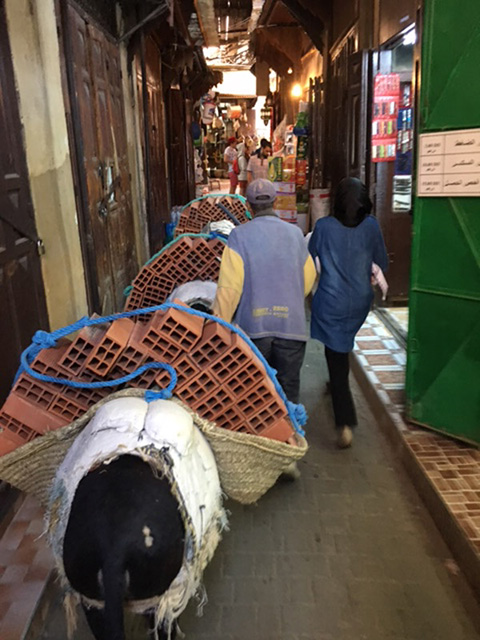
Your sightseeing tour will include the following:
- New Medina
- The Medersa
- Bab Boujloud
- The Splendid fountain at Place Nejjarine
- The Mellah
- Souks
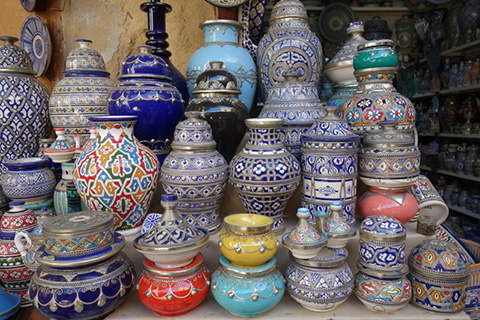
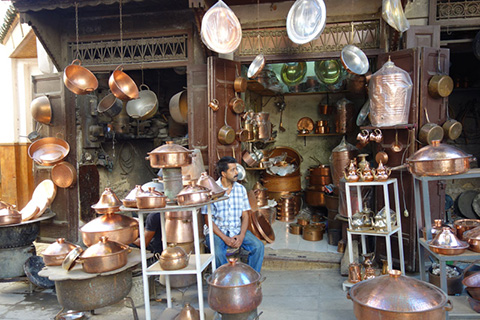
Day 5: Fes – Erfoud
Continue with your English speaking driver to the town of Erfoud, a base from which to explore the vast dunes of Erg Chebbi. This is a spectacular drive through the cedar forests of the Middle Atlas to Midelt and on across the Pass of the She-Camel and through the Tunnel of the Legionnaires looking out over the valley of the Ziz to Errachadia.
Arrival to Erfoud in the afternoon.
Check in and accommodation at your hotel in Erfoud.
Day 6: Erfoud - Merzouga
At 10h30 am, Rendez-vous with a 4x4 WD driver and transfer to the dunes of Erg Chebbi, possibly the largest dunes in the Sahara desert. The dunes of Erg Chebbi are a strikingly strange natural formation. On the top of the flattest area you could imagine, suddenly a long mountain of sand rises. This mountain is surrounded by flat and desolate nature on all sides, and you could end up wondering if it really is real. But so it is, even if its existence is so weird that it has given rise to legends and myths among the locals.
Time for lunch during the tour.
Upon arrival at the dunes you will witness the sunset from over the desert dunes and be astounded by the peace and calm as well as the changing colours of the landscape. Enjoy your special night under the stars at this beautiful Oasis in a premium tented camp. Experience a camel ride at sunset from the top of the dunes. Watching the sun rise or set over the sand dunes of Merzouga may be the most spectacular experience you can have on your trip to Morocco.
Check in, dinner and accommodation in private desert encampment.
One of the most requested parts of Morocco is camping out in the desert. Based around the world renowned dunes at Mergouza to the south of Erfoud, we have a special arrangement with an encampment that is quite unique and private. Excellent accommodation, full WC and shower facilities and first-rate service and dining are all part of this experience.
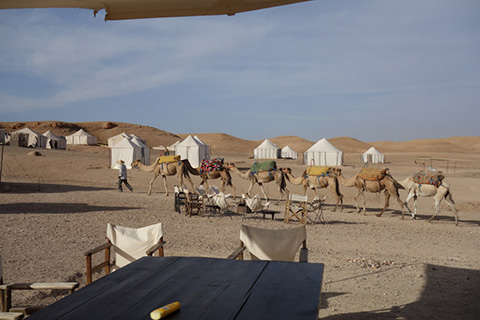
Day 7: Merzouga – Tinghir – Skoura
After Merzouga, you drive towards Skoura, En route you pass by the most spectacular natural environments Gorges of Todra and if still time you will visit also the Dades gorges. The Gorge du Dadès, distinct from the Todra Gorge with its fields of fig and myriad vegetation and continue to the Todra Gorge. Craggy and colourful rock walls up to 1,000 feet high loom over a lush narrow valley dotted with oasis-like date palmeries and irrigated fields of grain. In contrast to the much-anticipated Sahara, these gorges may be the most unexpected pleasure of the trip. You can walk to explore its depths.
After lunch in Tinghir (On own), you then continue your journey to arrive in Skoura late afternoon.
Check-in and accommodation at your hotel in Skoura.
Day 8: Ouarzazate – Marrakech – The high Atlas
Approximately 5 hours drive
After breakfast, visit the Palace of Glaoui Kasbah Ait Ourir, the studio of cinema and the Ait Ben Haddou Village which is located about ten kilometers on the road from Ouarzazate to Marrakech. Two kilometers before the entrance of the village, a promontory along the road offers a panoramic view of the whole ksar and vegetables along Ouarzazate river. The ksar was classified as one of the World Heritage sites in Morocco and has been subject of many restorations. It is built on the left side of the salty valley on a hill, its unique location and natural decor make the village the main shooting location for famous films such as Lawrence of Arabia and Jesus of Nazareth. Each door, each courtyard holds its architectural treasure and terraces on top of buildings offer beautiful views of the village and the river below.
Continue to Marrakech, via the col of Tizi Tichka, the highest passage of Morocco and all North Africa as you cross over the High Atlas Mountains to the High Atlas Mountains and Kasbah du Toubkal / or Kasbah Tamadot . Head south from Marrakech along the hairpin bends which eventually leads to one of only two passes through the High Atlas Mountains. Perhaps make a brief stop at the Berber villages of Tahanoute or Asni and continue to the village of Imlil, where you will take a ten minute walk up to Kasbah du Toubkal. Mules will be available if you prefer to ride! Sited on a hilltop with commanding views of the surrounding valley, The Kasbah du Toubkal was built as a summer palace for the Pasha El Glaoui. It is now a wonderful place to experience Berber hospitality and a great base from which to explore the High Atlas.
Check in and accommodation at your hotel in Asni / or Imlil.
Day 9: Imlil
After breakfast, your Mountain guide will take you for a full day trek in the Mountains and visit the nearby Berber Villages. You trek up to the Tizi n’Tamatert col, descend into the stunning Imane valley. Walk by the village of Tinerhourhine and around to the village of Aguersioual, follow river courses, cross seguias (traditional irrigation canals) and rivulets, past terraces and through walnut groves. Picnic on route.
Duration: 6 to 7 hours walking time.
Day 10: Asni – Marrakech
Approximately 1 hour and half drive
Our cookery experience takes place amongst hectares of olive groves and vegetable gardens in the Berber countryside in the verdant Amezmize Valley. You will have the chance to spend the morning exploring the gardens and orchards of the beautiful properties, learning about traditional cultivation techniques and choosing the ingredients with which you will later prepare an authentic two course Moroccan meal, helped by well reputed local chefs that will share with you some of their secrets.
As an artist who would unveil his artwork, Chief Tarik will help you to study much. Learn how to make a variety of mouth-watering recipes, how to choose good vegetables, good herbs and take advice on how to cook healthy meals without sacrificing flavor.
Check in and accommodation at your hotel in Marrakech.
Day 11: Marrakech
At 9h30 am, your guide will meet you at the hotel for full day guided tour of Marrakech.
Marrakech enjoys a legend status which conveys the ideas of mystery, sensuality, and exoticism. Its influence and fame has been so strong and intense in the history of Morocco, that as a matter of fact the country was named after the city.
Marrakech was founded in 1062 by one of the chieftains of the Almoravid king Youssuf Ibn Tashfin. The Almoravids were desert warriors, very much attached to their Islamic religion; the original garrison developed very quickly into a city where numerous mosques and madrasas (Koranic schools) were built. Andalousian craftsmen built and decorated several palaces, merging their style with the Saharan and African traditions, which gave the city a distinctive architectural flavour. The Almoravids also erected the city walls, and created a complex system of underground irrigation canals to bring water from the High Atlas, the khettara – a system still in use to water the several gardens of the city.
At its height, Marrakech was the capital of the Almoravid empire, which stretched as far as Senegal, most part of Spain, and Algiers. In 1147 the Almohads, tribesmen from the High Atlas mountains who practised orthodox Islam, sacked the city, replacing the Almoravids as rulers of the empire, and destroying many of the palaces and mosques of their predecessors. New ones were built soon, though, including the famous Koutoubia mosque, which dates from this period. Ever since, alternate ages of splendour and decline sculpted Marrakech’s unique and charming character, at once decadent and full of life.
Nowadays, Marrakech is a vibrant city which exhibits a curious blend of the ancient and the modern, allowing travellers the chance to experience the genuine medieval atmosphere of the old medina, and visit the trendiest bars, art galleries and restaurants in the French Quarter, Guéliz, built at the beginning of the 20th Century, all in one day.
Highlights of your visit will include:
- Djemaa El Fna, the Square
- Saadian Tombs
- The Koutoubia Mosque
- El Bahia Palace
- The Madrasa Ben Youssef
- The Souks
- The Majorelle garden
Day 12: Marrakech
At 9h30 am, your guide will meet you at the hotel for extra half day guided tour:
- Crafts and shopping tour
- The Museum of Marrakech
- The garden of “La Menara”
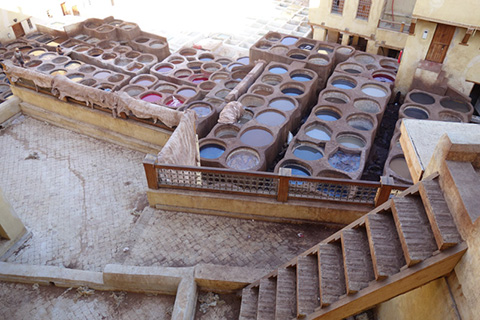
Day 13: Marrakech - Essauoira
Morning transfer to the city of Essaouira, 105 miles from Marrakech. This magical fortified coastal town is in total contrast to Marrakech and offers many photographic opportunities.
Check in and accommodation at your hotel in Essaouira.
The remainder of the day is at your leisure.
Day 14: Essaouira
At 9h00 am, your English speaking guide will meet you for half day walking tour of Essaouira.
Essaouira is a magical fortified coastal town on the Atlantic Ocean. Built by the Portuguese in the 17th C. In total contrast to Marrakech, the pace of life here is relaxed and slow. Essaouira was made famous by Orson Wells, who filmed Othello here and more recently, by residents like Jimmy Hendrix and the Rolling Stones. Unlike Marrakech and Fes, there are no single places of major historical note to visit but Essaouira in itself becomes an historic location and is not to be missed.
The fishing port creates a backdrop to the white painted buildings of the Medina. The souk is small by comparison to Marrakech and easy to navigate. Essaouira is a haven for artists and handmade works of art are abundant. Being a fishing port, fresh fish is readily available and lunch on the port is a must as the day’s catch is cooked in front of you. The wide sweeping beach offers windsurfing, kite-surfing, camel and horse riding and quad bike excursions.
This small town was once 33% Jewish and had over thirty synagogues. An 18th century synagogue may still be visited. You can visit the tomb of Rabbi Chaim Pinto in the vast Jewish cemetery, built next to the Atlantic Ocean. Rabbi Pinto is the object of an annual pilgrimage in the week preceding Rosh Hashana. Explore the town, its ramparts, and its lovely street of thuya craftsmen, the lively port, the colourful souk, the medina and the Squala.
The remainder of the day is at your leisure.
Day 15: Essaouira – Safi – Oualidia - El Jadida - Casablanca
Early morning transfer to Casablanca. En route, visit Safi and it’s seaport on the Atlantic Ocean. It’s a centre for the fishing industry of Morocco and also for the export of phosphates. The city was held by the Portuguese until 1541. Subsequently it came under French control until Morocco became an independent nation in 1956. Continuation to Oualidia by the sea, time for lunch and continue to El Jadida, sightseeing of this town including the famous citadel, a reminder of the Portuguese occupation of the 16th century. Arrival to Casablanca late afternoon.
Check in and accommodation at your hotel in Casablanca .
Day 16: Casablanca
Transfer to Casablanca airport for your onward flight out.
Day 1 - 2: Villa Mandarine in Rabat |
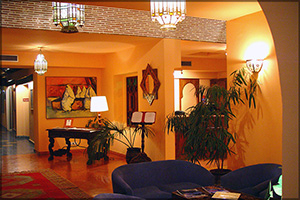 |
Day 3 - 4: Riad Salam in Fes |
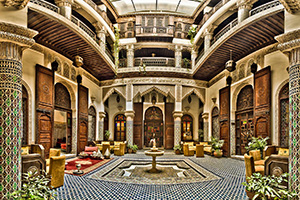 |
Day 5: Xaluca in Erfoud |
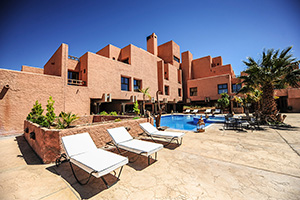 |
Day 6: private desert encampment in Merzouga |
|
Day 7: Ksar El Kebbaba in Skoura |
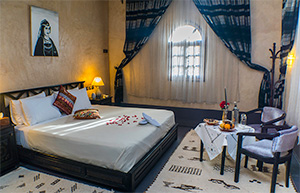 |
Day 8 - 9: Kasbah Du Toubkal in Imlil |
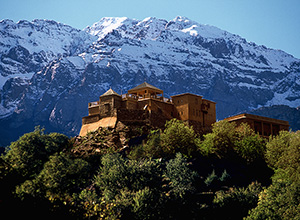 |
Day 10 - 12: La Maion Arabe in Marrakech |
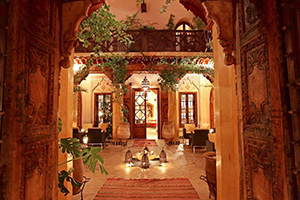 |
Day 13 - 14: Palais Heure Bleu in Essaouira |
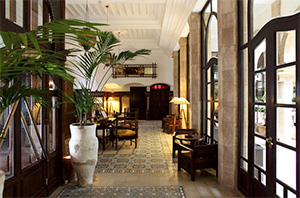 |
Day 15: Le Doge in Casablanca |
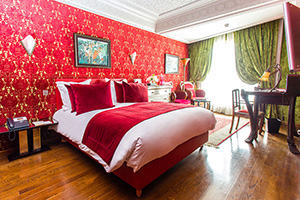 |




